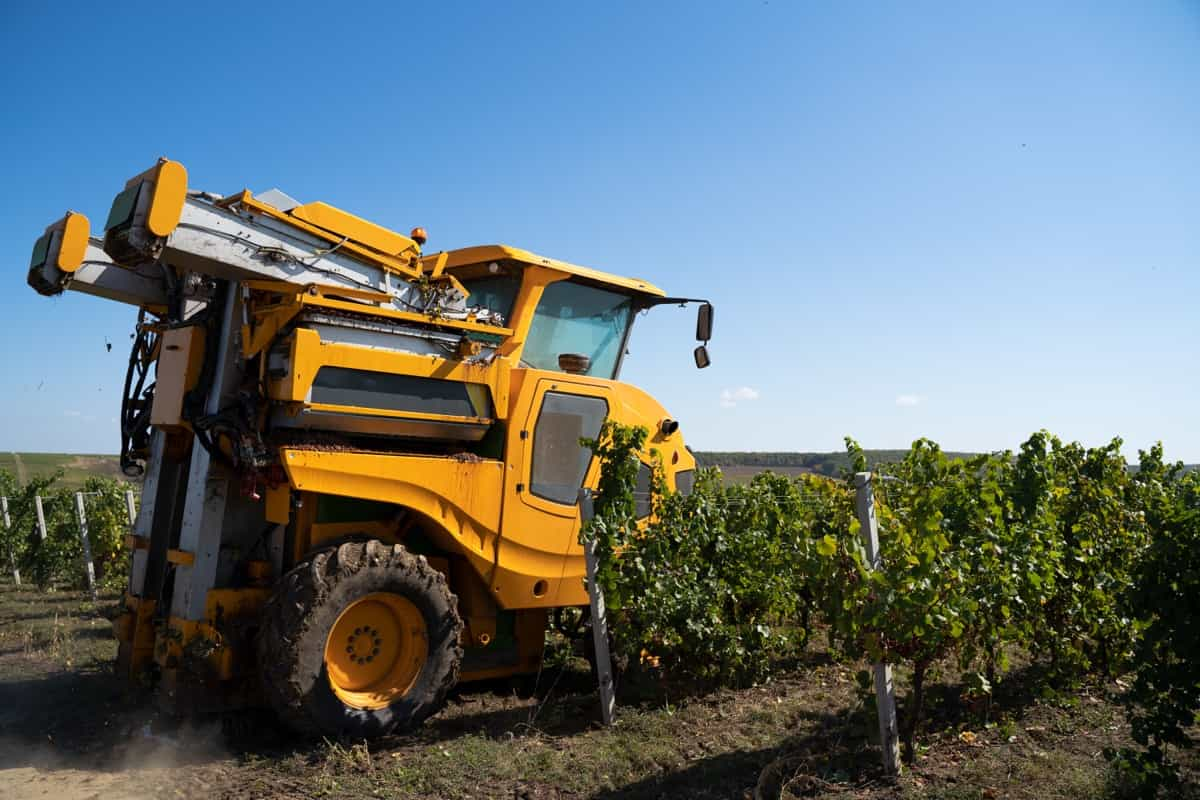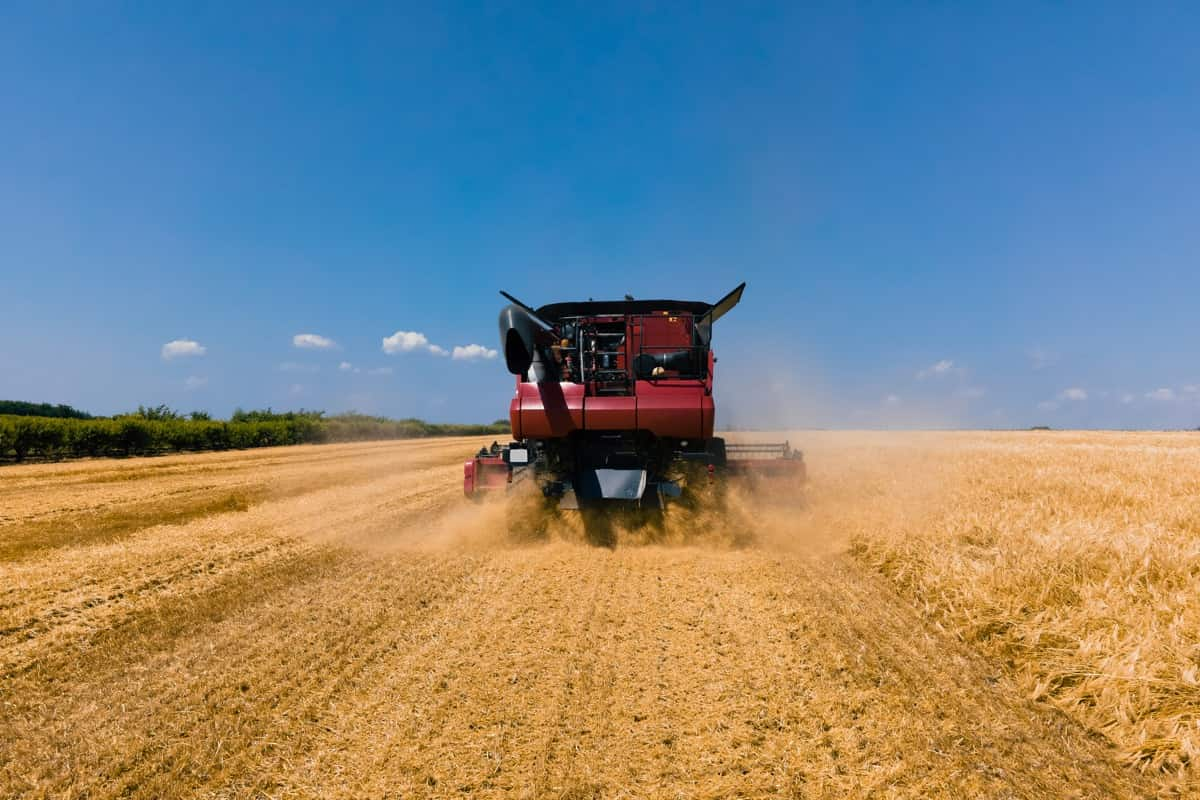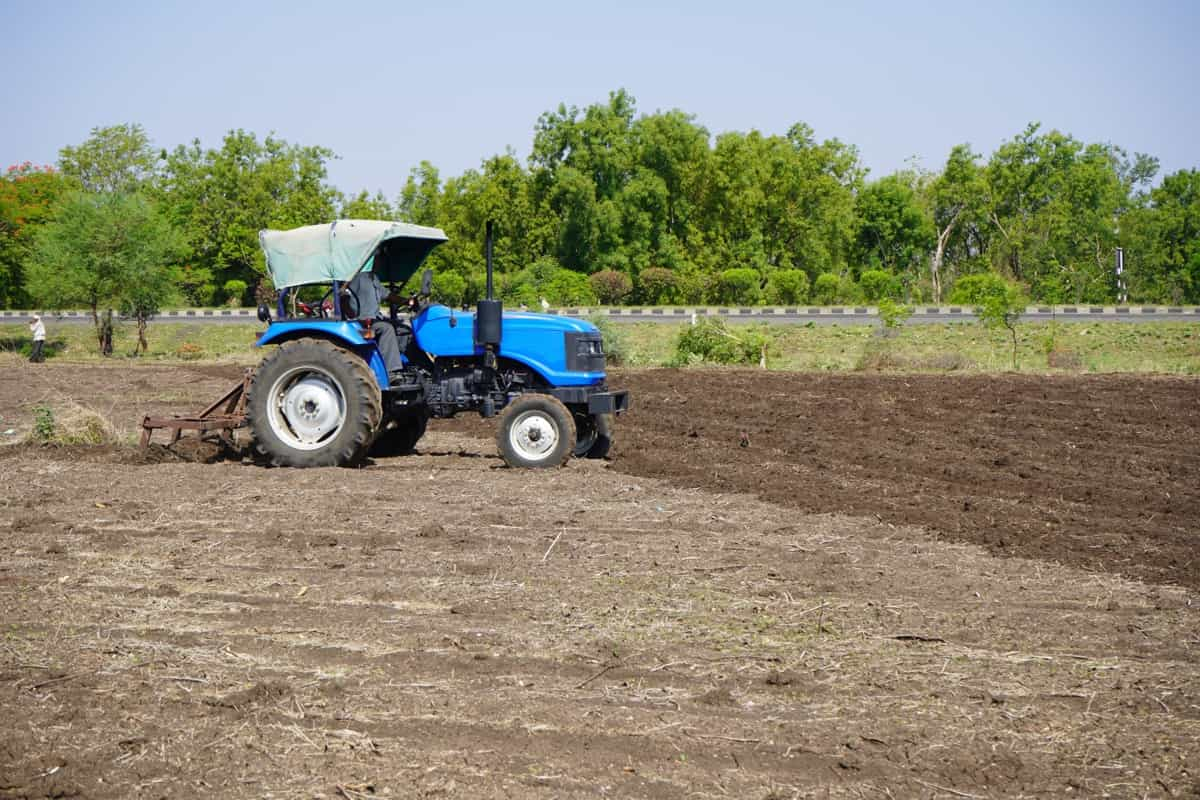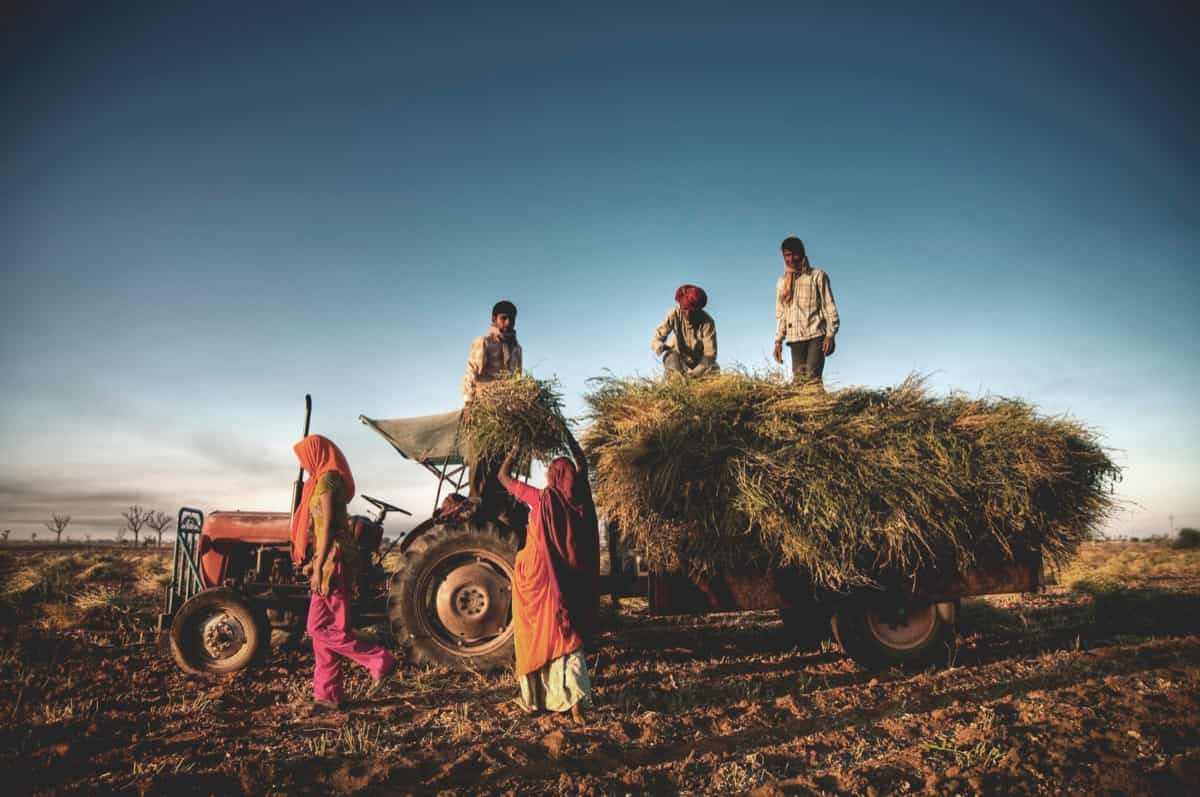The government aims to double the farmers’ income by 2022-23, and the surest way is the ‘big push’ to farm mechanisation in India. According to the Economic Survey of India, farm mechanisation has a direct correlation with crop productivity. The use of farm implements can increase productivity by up to 30% and reduce cultivation costs by up to 20%. Over the years, the use of tractors and farm machinery has outpaced the use of human power in agriculture.

For instance, mechanical and electrical sources of power have increased from 7% to about 90% between 1960-61 to 2014-15. Similarly, the farm power from human and animal sources has reduced from 93% to 10% over the same period. The above data establishes a direct correlation between tractorisation, farm mechanisation, and advancements in Indian agriculture. It is this relationship we will try to understand more comprehensively in this article.
Understanding Tractorisation and Farm Mechanisation
Tractorisation refers to the process of introducing tractors into agricultural operations. It is a subset of farm mechanisation. Tractors were introduced in 1959 in India, and tractors have become indispensable to modern farming practices, replacing traditional manual labour and animal-based power.
On the other hand, farm mechanisation encompasses a broader range of equipment and farming techniques. It involves using machinery and technology to automate and streamline agricultural processes. Thus, the use of tractors, implements and harvester machines collectively are part of driving mechanisation in agriculture.
In case you missed it: How to Choose the Right Tractor for Your Farm: Best and Top Tips for Beginners

Benefits of Farm Mechanisation
The introduction of tractors has catapulted farm mechanisation in India by providing consistent power, speed, and precision, thus allowing farmers to carry out operations more efficiently and effectively. Some of the benefits of farm mechanisation are given below
- It helps farmers overcome challenges of income limitation and losses due to delays in completing time-bound farm activities.
- It also helps overcome farmers’ struggles in manual labour and enhances manpower productivity because skills are integral to operations that require machines.
- Effective use of farm machinery increases crop productivity as it allows precision in the agriculture operations
- It also enables farmers to adopt crop rotation, which is growing two or more crops on the same land. With this, the cropping intensity increases, and agricultural land becomes commercially viable.
- Modern machines like tractors have GPS systems, remote sensing, and data analytics capabilities. These technologies help farmers make informed decisions regarding crop planning, soil health management, and pest control.
Has the Use of Tractors Led to Farm Mechanisation in India?
We hope you have understood tractorisation and farm mechanisation and their impact on Indian agriculture. Now, the question is, has there been farm mechanisation due to tractorisation? Or is it only tractorisation? Or the farm mechanisation spread is limited to a few agriculture processes only? Let us answer each one of them.
In case you missed it: A Guide to Understand Importance of Drones in Agriculture/Farming: Advantages, Applications, and Different Types

During the pandemic, the penetration of tractors increased in India by almost 40 per cent between 2019 and 2020. Domestic sales in FY 2023 hit a record high of 9.55 lakh tractor units. However, this process of tractorisation has not led to farm mechanisation in Indian agriculture. Let us understand the pointers given below that explain the farm mechanisation penetration in India and its reasons for being still low :
- As per a NABARD study, farm mechanisation in India currently stands at about 40-45%, with states like Punjab, Haryana, and Uttar Pradesh having high levels of mechanisation. However, it is still low compared to countries like China (57%), Brazil (75%), and the USA (95%).
- The tractor is not the only machinery used for farming in India. Many farm activities like spraying and harvesting are still being done manually or with the help of agricultural labourers.
- Micro-surveys done across the country reveals that tractors could be utilised more efficiently. Their use in the country ranges from 500-600 hours per day compared to the standard benchmark of 800-1000 hours per day.
- Many farmers cannot access costlier machines like laser land levelers, harrows, mulchers, combine harvesters, etc. As a result, they rely on primitive and traditional methods of farming.
- Climate change is real, and its impact on agriculture is well documented. But Indian farmers are barely aware of climate-resilient technologies that can help them tide over the shock of climate change.
- A very less percentage of 13 crore farmers in India are aware of the untapped potential of digitalisation in agriculture.
ICAR Study on Spread of Farm Mechanisation
Indian Council of Agricultural Research (ICAR) published a report in 2023. As per it, there has been an uneven spread of farm mechanisation, and it is limited mainly to a few agricultural processes. Some of the highlights are:
- Seedbed preparation operation is highly mechanised (more than 70%) for major crops.
- Harvesting and threshing operations are the least mechanised (lower than 32%) for major crops except for rice and wheat.
- In seedbed preparation, the mechanisation level is higher in rice and wheat crops than in other crops.
- The mechanisation level for sowing operation is the highest for wheat crops (65%).
- The mechanisation levels in planting/transplanting operations for rice and sugarcane are 30% and 20%, respectively.
- In the case of harvesting and threshing, the mechanisation levels in wheat and rice crops are more than 60% and very less in cotton crops.
In case you missed it: Role of 5G Technology in Agriculture: How will it Change Future Farming

What Needs to be Done to Spread Farm Mechanisation in India?
The penetration of tractors among Indian farmers indicates that farmers want to use technology in farming and reap the benefits. But they cannot do so due to limited income, prohibitive costs of farm machinery, and lack of information. Some of the suggestions are:
- Initiatives such as government subsidies, awareness programs, and cooperative farming models can encourage farmers to adopt mechanised practices.
- Collaborations between private sector companies, agricultural research institutions, and farmers can lead to the development of innovative, affordable, and customised solutions tailored to local needs.
- Providing farm equipment to farmers on pay per use basis. It will enable farmers to access more and more farm machinery at an affordable cost.
Conclusion
The adoption of tractors and mechanised equipment has transformed traditional farming methods, enabling farmers to optimise resources, save time and costs, and improve their livelihoods. But farm mechanisation in India has only been limited to using tractors and a few farm implements for a few limited crops. With government support, private participation, and digital platforms like Tractorkarvan, the problem can be solved.
In case you missed it: Impact of Blockchain Technology and ChatGPT on Agriculture

Tractorkarvan is a one-stop digital platform for all the information farmers need on tractors and farm equipment. It provides user-friendly features that help farmers in the process of finding, buying & selling tractors and financing tractors, farm implements, farm tyres, and harvesters. On Tractorkarvan, farmers get detailed, well-researched, and curated information such as specifications, features, price & EMI, and authentic user reviews. Through its large on-ground presence, Tractorkarvan assists Indian farmers to select, buy, and finance tractors with ease.
- How to Build a Low-budget Goat Shed: Cheap Ideas and Tips
- Goat Farming Training Programs in India: A Beginner’s Guide
- Types of Pesticides Used in Agriculture: A Beginner’s Guide
- Economical Aquaculture: A Guide to Low-Budget Fish Farming
- 15 Common Planting Errors That Can Doom Your Fruit Trees
- How to Make Houseplants Bushy: Effective Tips and Ideas
- Innovative Strategies for Boosting Coconut Pollination and Yield
- Pollination Strategies for Maximum Pumpkin Yield
- The Complete Guide to Chicken Fattening: Strategies for Maximum Growth
- Natural Solutions for Tulip Problems: 100% Effective Remedies for Leaf and Bulb-Related Issues
- Revolutionizing Citrus Preservation: Towards a Healthier, Greener Future
- Natural Solutions for Peony Leaf and Flower Problems: 100% Effective Remedies
- Maximizing Profits with Avocado Contract Farming in India: A Comprehensive Guide
- Natural Solutions for Hydrangea Problems: 100% Effective Remedies for Leaf and Flowers
- The Ultimate Guide to Choosing the Perfect Foliage Friend: Bringing Life Indoors
- From Sunlight to Sustainability: 15 Ways to Use Solar Technology in Agriculture
- The Ultimate Guide to Dong Tao Chicken: Exploring from History to Raising
- The Eco-Friendly Makeover: How to Convert Your Unused Swimming Pool into a Fish Pond
- Mastering the Art of Delaware Chicken Farming: Essentials for Healthy Backyard Flocks
- 20 Best Homemade Fertilizers for Money Plant: DIY Recipes and Application Methods
- How to Craft a Comprehensive Free-Range Chicken Farming Business Plan
- Brighten Your Flock: Raising Easter Egger Chickens for Beauty and Bounty
- How to Optimize Your Poultry Egg Farm Business Plan with These Strategies
- Subsidy for Spirulina Cultivation: How Indian Government Schemes Encouraging Spirulina Farmers
- Ultimate Guide to Raising Dominique Chickens: Breeding, Feeding, Egg-Production, and Care
- Mastering the Art of Raising Jersey Giant Chickens: Care, Feeding, and More
- Ultimate Guide to Raising Legbar Chickens: Breeding, Farming Practices, Diet, Egg-Production
- How to Raise Welsummer Chickens: A Comprehensive Guide for Beginners
- How to Protect Indoor Plants in Winter: A Comprehensive Guide
- Ultimate Guide to Grow Bag Gardening: Tips, Tricks, and Planting Ideas for Urban Gardeners
- Guide to Lotus Cultivation: How to Propagate, Plant, Grow, Care, Cost, and Profit
- Agriculture Drone Subsidy Scheme: Government Kisan Subsidy, License, and How to Apply Online
- Ultimate Guide to Raising Araucana Chickens: Breed Profile, Farming Economics, Diet, and Care
- Bringing Hydroponics to Classroom: Importance, Benefits of Learning for School Students
- Ultimate Guide to Raising Polish Chickens: Breed Profile, Farming Economics, Diet, and Care
- Ultimate Guide to Raising Australorp Chickens: Profile, Farming Economics, Egg Production, Diet, and Care